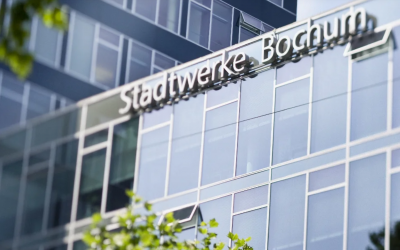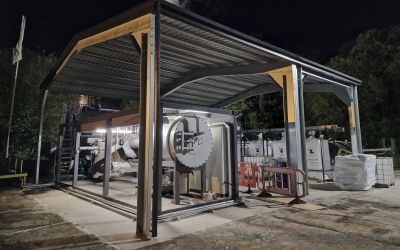Der landwirtschaftliche Sektor ist derzeit für rund 25% der weltweiten Treibhausgase verantwortlich. Das müsste laut den Autoren Daniel Kray (Hochschule Offenburg) und Hans-Peter Schmidt (Ithaka Institut) nicht sein. Stattdessen könnte die Landwirtschaft mit den richtigen Weichenstellungen das Klima schützen, statt zu belasten. Das 1,5°C-Ziel, das sich Deutschland auf die Fahnen geschrieben hat, sei auch nur zu erreichen, wenn die Land- und Forstwirtschaft de facto mehr CO2 aus der Atmosphäre entzieht und speichert als ausstößt. Welche simple Rolle Pflanzenkohle dabei spielt, stellen die beiden Wissenschaftler in ihrem aktuellen Beitrag für den Solarbrief (Mitgliederzeitung des SFV, dem größten deutschen Solarenergieverein) vor. Lesenswert!
Grüne Fernwärme mit Biochar: Novocarbo und Stadtwerke Bochum setzen auf PYREG’s Net Zero Technologie
Vier PYREG PX 1500 Anlagen bilden die technische Basis des größten Carbon Removal Parks des deutschen Climate Tech Start-ups Novocarbo Das deutsche Klimatechnologieunternehmen Novocarbo hat den Startschuss für seinen bisher größten Carbon Removal...





0 Kommentare